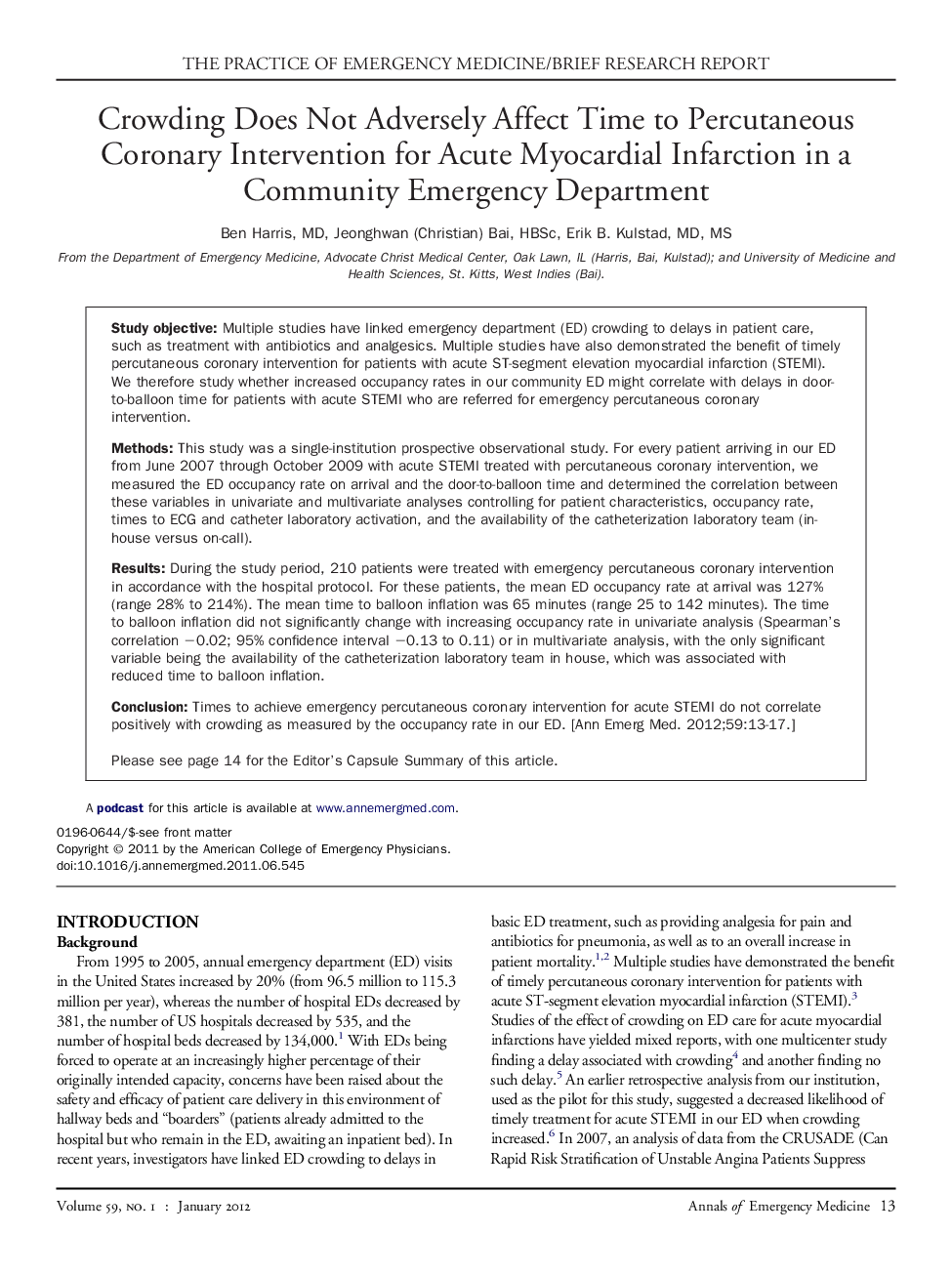| Article ID | Journal | Published Year | Pages | File Type |
|---|---|---|---|---|
| 3230324 | Annals of Emergency Medicine | 2012 | 5 Pages |
Study objectiveMultiple studies have linked emergency department (ED) crowding to delays in patient care, such as treatment with antibiotics and analgesics. Multiple studies have also demonstrated the benefit of timely percutaneous coronary intervention for patients with acute ST-segment elevation myocardial infarction (STEMI). We therefore study whether increased occupancy rates in our community ED might correlate with delays in door-to-balloon time for patients with acute STEMI who are referred for emergency percutaneous coronary intervention.MethodsThis study was a single-institution prospective observational study. For every patient arriving in our ED from June 2007 through October 2009 with acute STEMI treated with percutaneous coronary intervention, we measured the ED occupancy rate on arrival and the door-to-balloon time and determined the correlation between these variables in univariate and multivariate analyses controlling for patient characteristics, occupancy rate, times to ECG and catheter laboratory activation, and the availability of the catheterization laboratory team (in-house versus on-call).ResultsDuring the study period, 210 patients were treated with emergency percutaneous coronary intervention in accordance with the hospital protocol. For these patients, the mean ED occupancy rate at arrival was 127% (range 28% to 214%). The mean time to balloon inflation was 65 minutes (range 25 to 142 minutes). The time to balloon inflation did not significantly change with increasing occupancy rate in univariate analysis (Spearman's correlation −0.02; 95% confidence interval −0.13 to 0.11) or in multivariate analysis, with the only significant variable being the availability of the catheterization laboratory team in house, which was associated with reduced time to balloon inflation.ConclusionTimes to achieve emergency percutaneous coronary intervention for acute STEMI do not correlate positively with crowding as measured by the occupancy rate in our ED.
